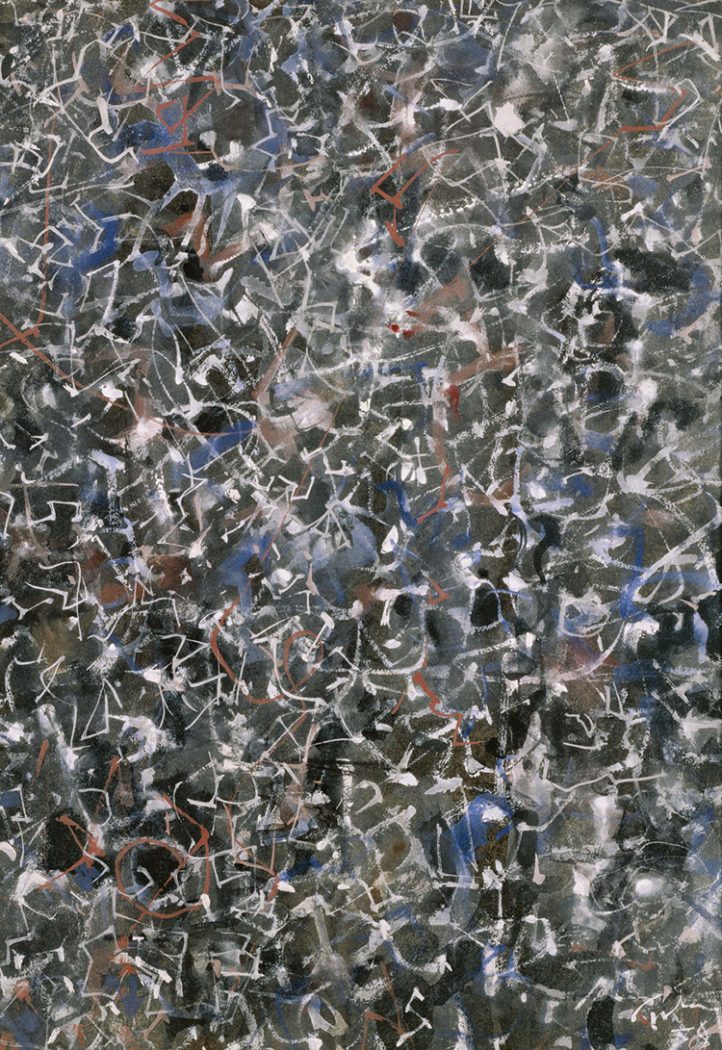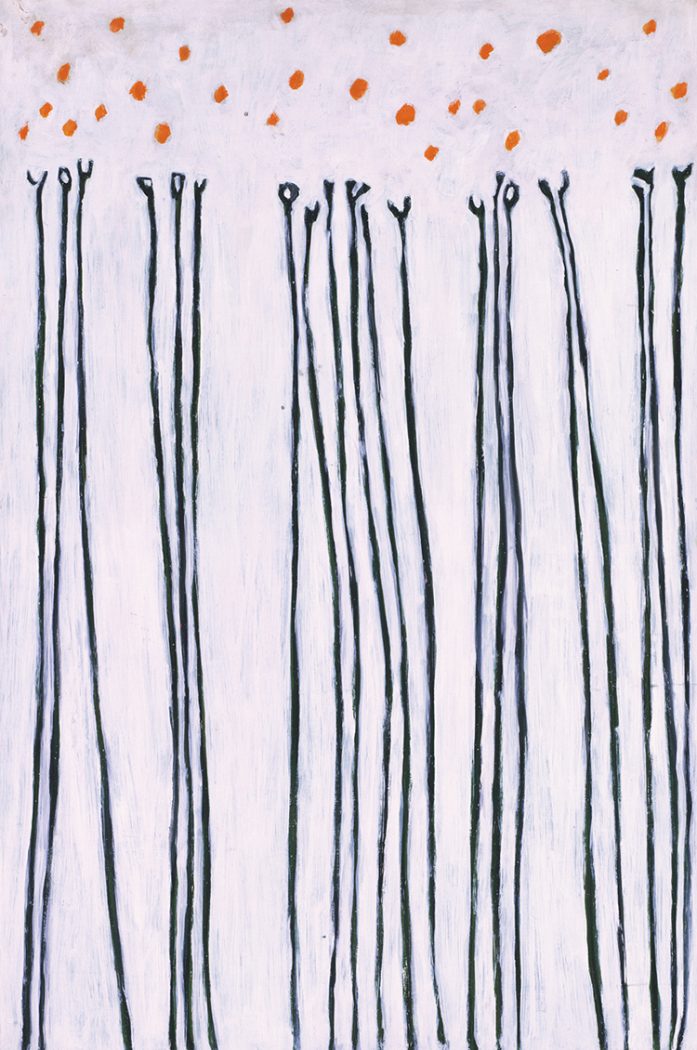
Mark Tobey, Night Flight, 1956, Tempera on cardboard, 11 7/8 x 9 in., Fondation Beyeler, Riehen/Basel, Beyeler Collection © Artists Rights Society (ARS), New York
“You can’t just look at Klees. They must be absorbed on multiple levels.”—Mark Tobey
One of the older members of the Abstract Expressionist circle, Mark Tobey had a special relationship with Paul Klee that stemmed from his strong grounding in Asian calligraphy and aesthetics. His study of Chinese calligraphy and philosophy (first from a Chinese student in Seattle and later while living in a Zen monastery in Kyoto), combined with his Bahá’í faith, led to his development of a delicate, linear calligraphic style. Tobey applied his signature “white writing” technique in his mesmerizing Night Flight. Using densely layered networks of white pigment against a dark ground, Tobey creates lines suggestive of nocturnal energy and movement.
This work is on view in Ten Americans: After Paul Klee through May 6, 2018.


